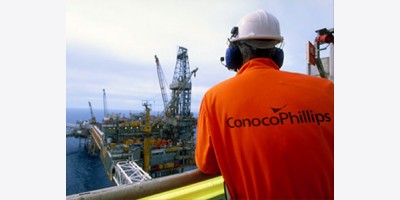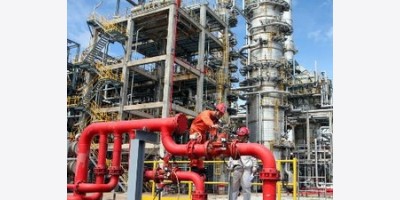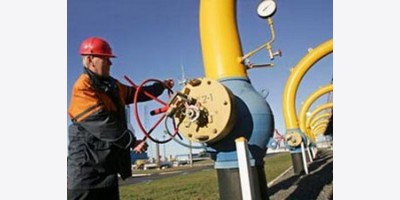When we first started getting substantial oil from fracking and horizontal drilling, the news about costs indicated that oil production would decline at a fast rate when prices were low, pushing prices back up. New data, however, argue for rising productivity of shale oil development—meaning plenty of petroleum to keep prices low.
Price cycles vary widely across industries based on how much of total cost is up-front expense versus on-going expense, as I explained in the best book about economics for business. When costs are mostly front-loaded (oil, airlines, ocean shipping) and capital assets last a long time, then price cycles are volatile. Most production continues after a drop in price, because the variable costs of running the operation are low. In contrast, where startup costs are low but operating costs take a large portion of revenue (retail, restaurants, health care), price drops force some companies out of business right away, protecting the remaining businesses from further price declines.
http://blogs-images.forbes.com/billconerly/files/2015/07/Oil-Prices-Old.jpg
The traditional view of oil economics is that most of the cost is up-front: exploration (finding the oil) and development of the field, which involves drilling production wells and setting up local infrastructure. The actual production cost, which involves running pumps, maintenance, and local transportation, is usually pretty low. With these basic concepts, oil production would keep flowing even after prices fell. A look at oil price history confirms the volatility of the industry.
The oil revolution changed that thinking. Fracking is more expensive than traditional production, and the benefits don’t last as long as normal development costs. Thus, fracking pushed up the on-going production costs relative to the up-front exploration and development costs. As fracking becomes more common, oil production will be more likely to fall when oil prices fell. (This is an oversimplification, of course.) This new economics of oil production argues that oil prices cannot stay too low, because production shuts down fairly quickly.
Now, however, we have some new information coming, reported in Mark Perry’s Carpe Diem blog. Perry has described the dramatic impacts of Bakken shale and new technology in a lengthy series of articles. In one recent article, Perry quotes an oil industry insider saying:
“Six or eight years ago we were estimating a recovery factor of just 3.5% in the Bakken shale reservoirs from our horizontal wells. With additional work, micro-seismic study, well production history, big data analytics, etc., we’re now estimating that we’re recovering 15-18% of the oil in place.” [The recovery factor is the proportion of total petroleum underground that can be brought to the surface.]
Perry also quotes an interesting Mark Mills article on Shale 2.0. Mills says:
“In recent years, the technology deployed in America’s shale fields has advanced more rapidly than in any other segment of the energy industry. Shale 2.0 promises to ultimately yield break-even costs of $5–$20 per barrel—in the same range as Saudi Arabia’s vaunted low-cost fields.”
The key technology, according to Mills, is big data. We know where the shale oil is, and now we have data on the geological characteristics of these fields. Mills writes, “At present, each long horizontal well is typically stimulated in 24–36 stages, with, on average, only one-fourth to one-third of those stages productive.” With better analytics, effectiveness of stimulation (fracking) will increase, pulling costs down.
It still looks like fracking has costs shifted toward production rather than exploration and development. The new twist is that the entire cost structure is dramatically lower. That means production will continue even at low costs. The shift in recovery factors from 3.5 percent to 15 percent produces a four-fold increase in total production.
The oil price forecast, thus, stays low. I continue to think that $60 is a ceiling. The floor is determined by the extent of fracking. Right now, it’s mostly a North American phenomenon, due partly to our geology and partly to our legal environment. It could spread, but that will be slow. Thus, don’t look for $20 oil any time soon. Though if the government oil companies that control most of the world’s oil fields were to run their operations rationally, then $20 oil is what we would get.
Learn about my economics and business consulting. To get my free monthly newsletter, view a sample, then hit the pink box. I’m a great speaker on the economic outlook, futurist, strategist.























